Google Nexus 7 Tablet Review – The $200 Jelly Bean Tablet
Nexus 7 Benchmarks

Peacekeeper is an online benchmark from Futuremark that realistically simulates the load placed on the browser by common JavaScript functions as used by popular, modern websites. For users who prioritize speed and performance, Peacekeeper helps answer the question of which browser or tablet is the best for them.
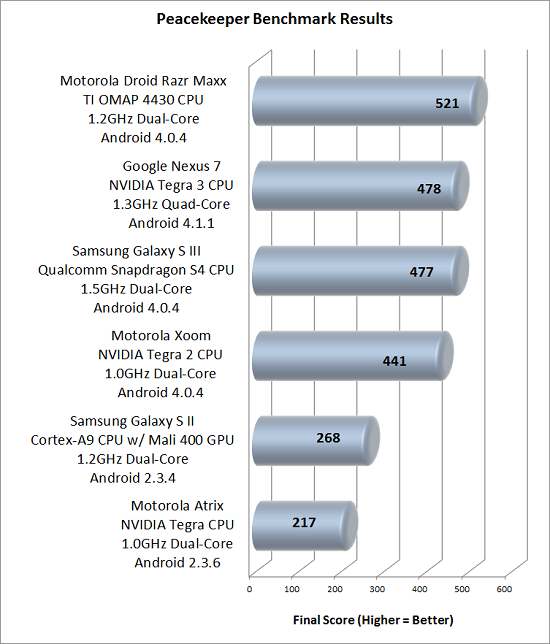
We tested the Motorola Atrix, Motorola Droid Razr Maxx, Motorola Xoom, Samsung Galaxy S II, Samsung Galaxy S III and Google Nexus 7. This is a mix of Android smartphones and tablets over the past couple years to give you an idea of how the Nexus 7 performs. As you can see the Google Nexus 7 did great on the Peacekeeper benchmark for web browsing and was in the top performing group.
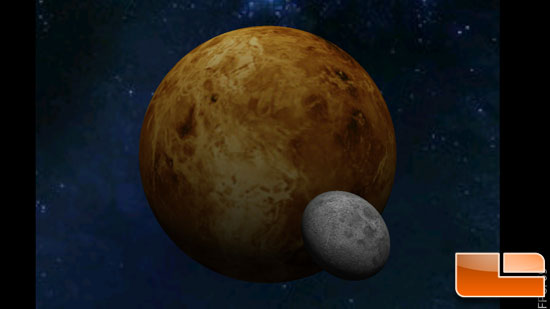
Quadrant is a CPU, I/O and 3D graphics benchmark. The Standard Edition requires an Internet connection to compute benchmark results and is supported by ads, but that should be fine for most users. We used version v2.1.1 for benchmarking the tablets.
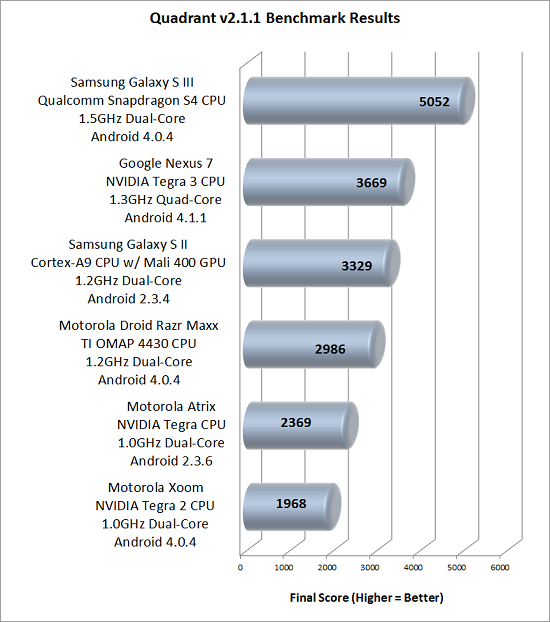
Quadrant showed that the Samsung Galaxy S III did the best here on this test thanks to the Snapdragon S4 1.5GHz dual-core processor, but the Google Nexus 7 wasn’t too far behind thanks to the NVIDIA Tegra 1.3GHz quad-core processor. Notice that the Google Nexus 7 was nearly twice as fast as the Motorola Xoom tablet with the NVIDIA Tegra 2 processor.
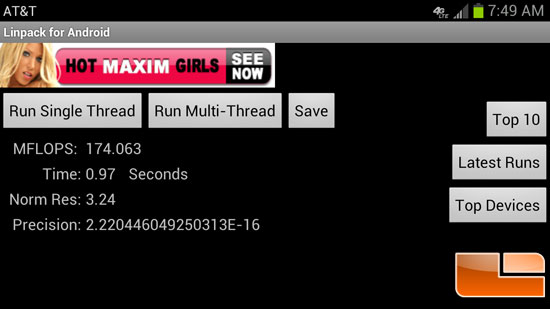
The LINPACK Benchmarks are a measure of a systems floating point computing power. Introduced by Jack Dongarra, they measure how fast a computer solves a dense N by N system of linear equations Ax = b, which is a common task in engineering. The solution is obtained by Gaussian elimination with partial pivoting, with 2/3*N3 + 2*N2 floating point operations. The result is reported in Millions of FLoating-point Operations Per Second (MFLOP/s, sometimes simply called FLOPS). This test is more a reflection of the state of the Android Dalvik Virtual Machine than of the floating point performance of the underlying processor. Software written for an Android device is written using Java code that the Dalvik VM interprets at run time. We used version 1.2.8 for benchmarking.
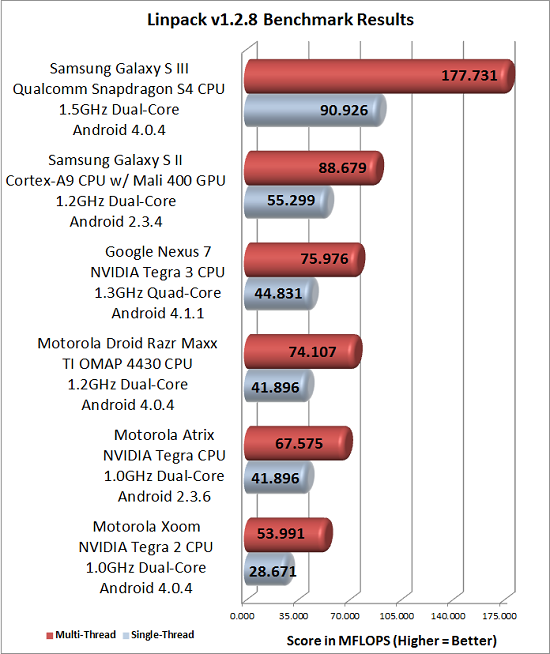
The Google Nexus 7 tablet performed well in Linpack and was easily to outperform an older tablet like the Motorola Xoom. Keep in mind the Motorola Xoom cost $469.99 for the WiFi only version when it came out in the middle of 2011 and the Google Nexus 7 is just $199.99!
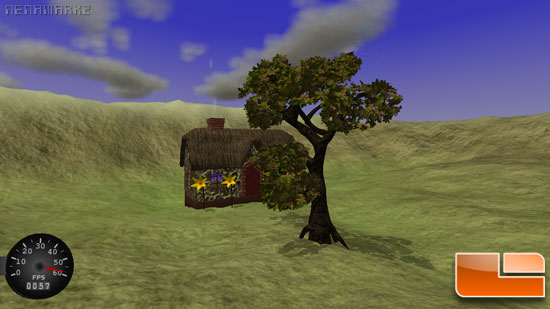
NenaMark is a benchmark of OpenGL ES 2.0, using programmable shaders for graphical effects such as reflections, dynamic shadows, parametric surfaces, particles and different light models to push the GPU to its limits. It can be downloaded from the Android Market or nena.se. We used NenaMark version 2.2 for benchmarking the tablets.
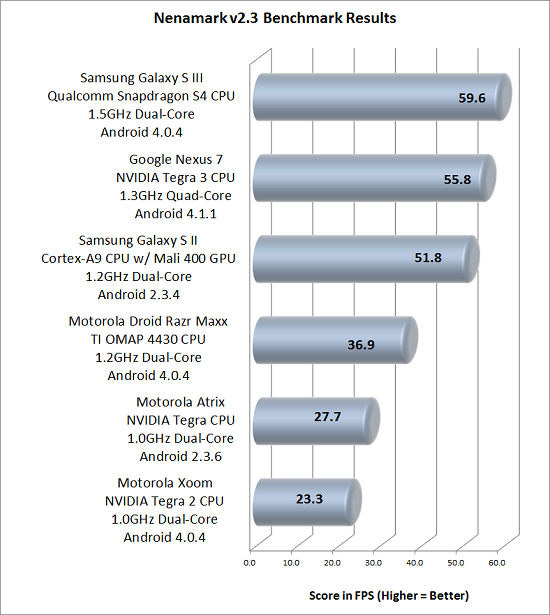
When it comes to this popular OpenGL ES 2.0 it should be noted that the screen resolution of the device plays a role in the performance results as screens with higher resolutions are rendering more pixels.
- Samsung Galaxy S III – 720×1280
- Samsung Galaxy S II – 480×800
- Motorola Droid Razr MAXX – 540×960
- Motorola Atrix – 540×960
- Motorola Xoom – 1280×800
- Google Nexus 7 – 1280×800
As you can see, the Google Nexus 7 is super fast with 55.8 FPS on this benchmark and that is impressive! The Nexus 7 has amazing 3D graphics performance thanks to the NVIDIA GeForce cores being used on the Tegra 3 processor.
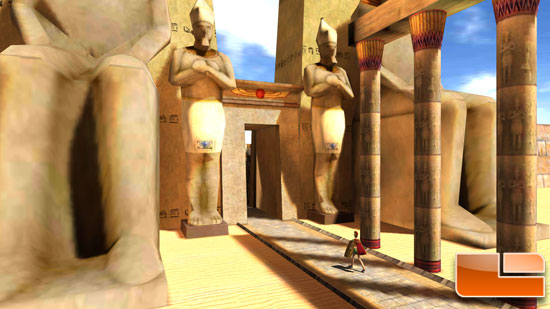
GLBenchmark 2.1.5 is an OpenGL ES 2.0 benchmark that you can run it in offscreen mode, which means that you can test devices at the same resolution no matter what the screen size really is. The majority of the tests focus on graphic resources, measuring the quality and performance of the underlying OpenGL ES 2.x implementation. The benchmark, among other features, contains high-level 3D animations; low-level graphic measurements; a possibility to create personalized benchmarking suites by changing settings.
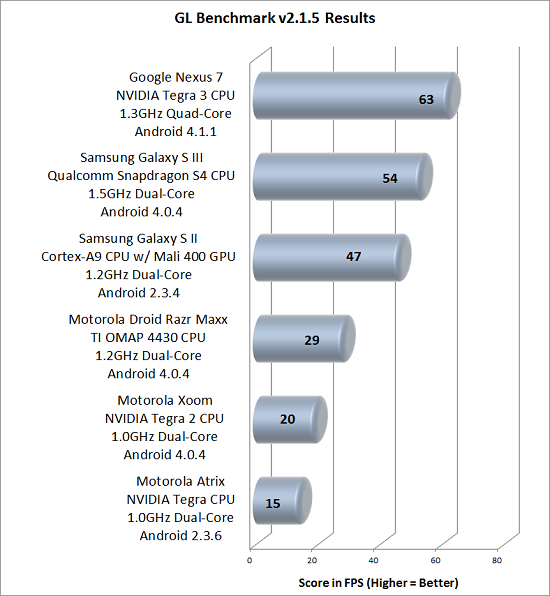
When it comes to this OpenGL ES 2.0 the winner is clear as the clearly the winner and has the best score of any tablet or smartphone that we have ever used. Getting 63 FPS on this benchmark is crazy considering the Motorola Xoom got just 20FPS. You are talking about a 3x improvement in 3D gaming performance.
After performance benchmarking the Google Nexus 7 it has tremendous processor power and is not a slow device. Don’t be fooled by the $199 price tag as the Nexus 7 is fully functional and fast. We found ourselves using the Nexus 7 versus other 10-inch tablets like the Motorola Xoom and Samsung Galaxy Tab 10.1 as it was much faster and Android 4.1 felt that much smoother and faster.

Comments are closed.